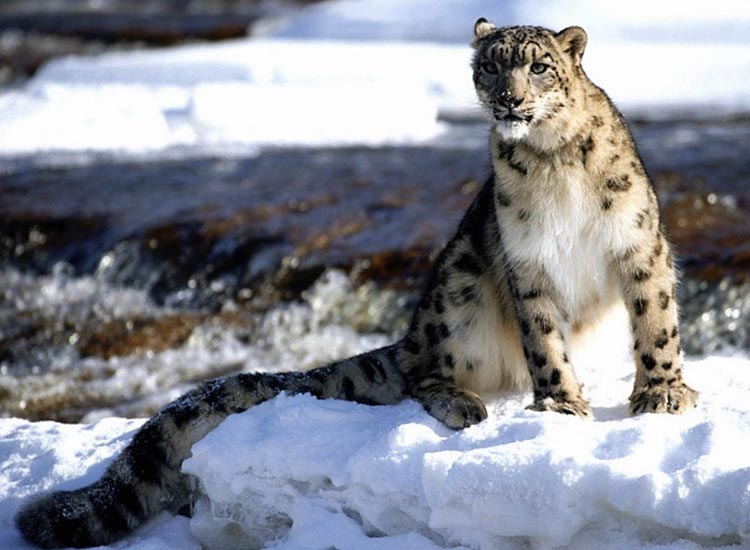Hemis National Park: The Crown Jewel of the High Himalayas

Carved into the lofty expanse of the Eastern Ladakh region in Jammu and Kashmir, India, lies Hemis National Park – a majestic wilderness where the wind whispers tales of snow leopards and the stark beauty of the high Himalayas reigns supreme. Established in 1981, this sprawling park, encompassing a staggering 4,400 square kilometers, is the largest notified protected area in India.
Hemis transcends the typical definition of a national park. Unlike its lush, tropical counterparts, Hemis embraces a stark, high-altitude ecosystem. The landscape here is a captivating mosaic of rugged mountains, glacial valleys, and arid cold deserts. Temperatures plummet below freezing for much of the year, blanketing the park in a pristine white mantle of snow. Yet, amidst this seemingly harsh environment, thrives a surprising diversity of life, adapted to survive in the unforgiving embrace of the Himalayas.
The park’s crown jewel, undoubtedly, is the elusive snow leopard. Often referred to as the “ghost of the mountains” for its solitary nature and camouflaged coat, the snow leopard is a majestic predator perfectly adapted to the high-altitude terrain. Hemis boasts one of the highest densities of snow leopards in the world, making it a haven for wildlife enthusiasts and conservationists alike. Spotting a snow leopard in the wild is a rare privilege, an encounter that leaves an indelible mark on the memory.
But Hemis is not a one-species show. The park is home to a plethora of other charismatic mammals. The majestic Bharal sheep, with their impressive horns, navigate the steep slopes with remarkable agility. Herds of curious Himalayan tahr, a type of wild goat, can be seen grazing on the sparse vegetation. The elusive Himalayan wolf, often mistaken for a large feral dog, roams the park’s vast expanse, playing a vital role in the ecosystem’s balance. Even the shy and solitary Eurasian brown bear makes its home in the higher reaches of Hemis, a reminder of the park’s diverse range of inhabitants.
The avian life at Hemis is no less impressive. Golden eagles soar on the thermals, their keen eyes scanning the terrain for prey. Lammergeyers, the bearded vultures of the Himalayas, with their impressive wingspans, scavenge for carrion, playing a crucial role in the ecosystem’s cleanup process. A variety of colorful songbirds, like the robin accentor and the fire-fronted serin, add splashes of color to the otherwise stark landscape. Observing these birds flitting through the thin mountain air is a testament to life’s tenacity in the harshest of environments.
Despite its harshness, Hemis also boasts a surprisingly diverse range of flora. Alpine meadows, carpeted with vibrant wildflowers during the brief summer months, provide a stark contrast to the barren landscape. Shrubs like dwarf juniper and Caragana cling tenaciously to the slopes, while pockets of birch and willow trees offer a touch of green in the valleys. These hardy plants not only provide sustenance for herbivores but also play a vital role in soil conservation and slope stabilization.
Hemis National Park is not just a haven for wildlife; it’s also a land steeped in cultural significance. The park is named after the Hemis Monastery, a Tibetan Buddhist monastery nestled within its boundaries. Founded in the 17th century, this magnificent structure stands as a testament to the region’s rich cultural heritage. The annual Hemis Festival, held within the monastery’s courtyard, is a vibrant celebration of masked dances and traditional music, offering visitors a glimpse into the unique culture of Ladakh.
However, the park faces significant challenges. Climate change poses a serious threat to the fragile Himalayan ecosystem. Rising temperatures and erratic weather patterns are leading to glacial retreat and habitat degradation, impacting the park’s wildlife. Additionally, poaching, although strictly prohibited, remains a concern, especially for endangered species like the snow leopard.
Conservation efforts are underway to address these challenges. The Hemis National Park authorities work tirelessly to protect the park’s wildlife and habitat. Anti-poaching patrols are conducted regularly, and community outreach programs aim to foster a sense of stewardship among local communities. Sustainable tourism initiatives are also being developed to ensure that visitors experience the park’s magic responsibly, with minimal impact on the environment.
A visit to Hemis National Park is an unforgettable adventure, a chance to step into a world untouched by the trappings of modern civilization. The stark beauty of the landscape, the thrill of potentially spotting a snow leopard, and the serenity of the high Himalayas combine to create an experience that lingers long after one leaves the park. Hemis National Park is a reminder of the importance of preserving our planet’s wild places and the incredible biodiversity they harbor.




